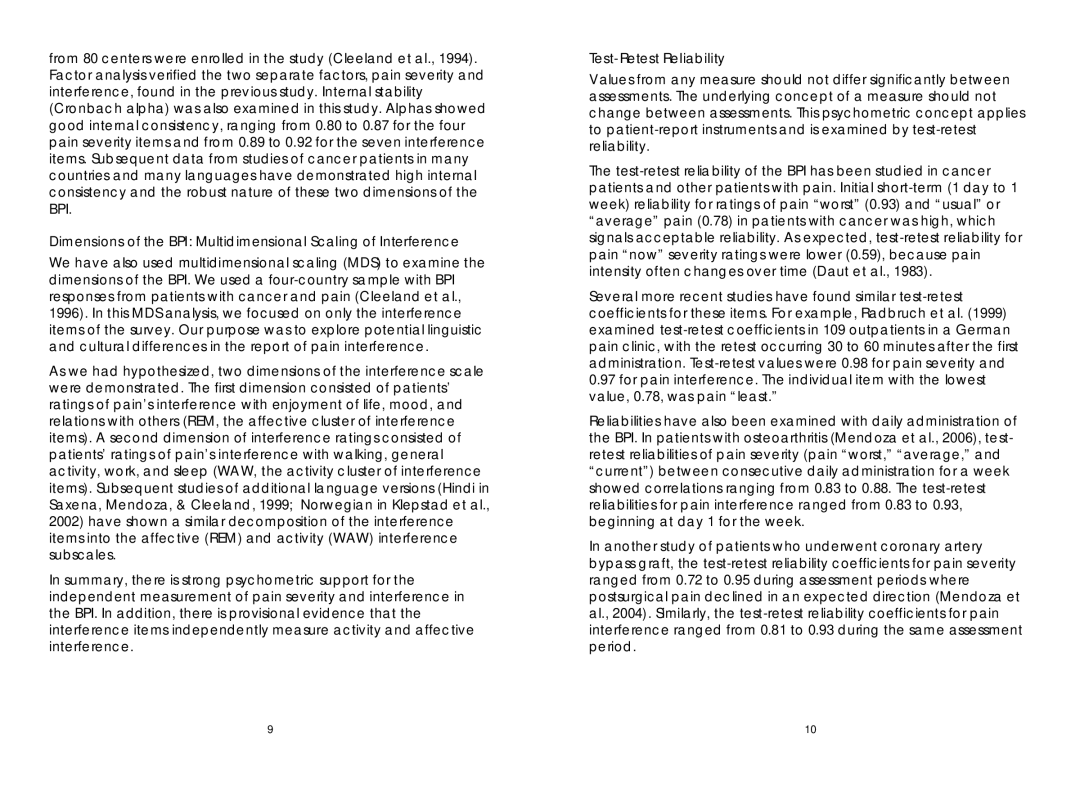from 80 centers were enrolled in the study (Cleeland et al., 1994). Factor analysis verified the two separate factors, pain severity and interference, found in the previous study. Internal stability (Cronbach alpha) was also examined in this study. Alphas showed good internal consistency, ranging from 0.80 to 0.87 for the four pain severity items and from 0.89 to 0.92 for the seven interference items. Subsequent data from studies of cancer patients in many countries and many languages have demonstrated high internal consistency and the robust nature of these two dimensions of the BPI.
Dimensions of the BPI: Multidimensional Scaling of Interference
We have also used multidimensional scaling (MDS) to examine the dimensions of the BPI. We used a
As we had hypothesized, two dimensions of the interference scale were demonstrated. The first dimension consisted of patients’ ratings of pain’s interference with enjoyment of life, mood, and relations with others (REM, the affective cluster of interference items). A second dimension of interference ratings consisted of patients’ratings of pain’s interference with walking, general activity, work, and sleep (WAW, the activity cluster of interference items). Subsequent studies of additional language versions (Hindi in Saxena, Mendoza, & Cleeland, 1999; Norwegian in Klepstad et al., 2002) have shown a similar decomposition of the interference items into the affective (REM) and activity (WAW) interference subscales.
In summary, there is strong psychometric support for the independent measurement of pain severity and interference in the BPI. In addition, there is provisional evidence that the interference items independently measure activity and affective interference.
Test-Retest Reliability
Values from any measure should not differ significantly between assessments. The underlying concept of a measure should not change between assessments. This psychometric concept applies to
The
Several more recent studies have found similar
0.97for pain interference. The individual item with the lowest value, 0.78, was pain “least.”
Reliabilities have also been examined with daily administration of the BPI. In patients with osteoarthritis (Mendoza et al., 2006), test- retest reliabilities of pain severity (pain “worst,”“average,”and “current”) between consecutive daily administration for a week showed correlations ranging from 0.83 to 0.88. The
In another study of patients who underwent coronary artery bypass graft, the
9 | 10 |
